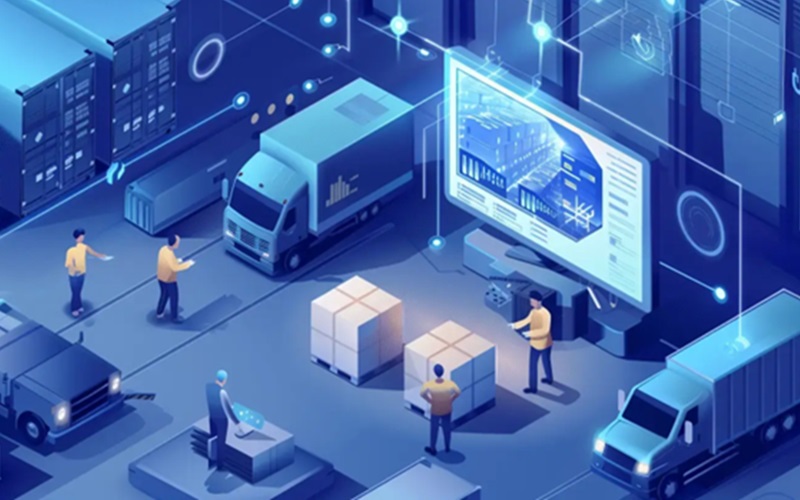In an era where the pace of change accelerates by the minute, Logistics Service Providers (LSPs) face a constant challenge: adapt swiftly or lag inevitably. To stay competitive in this fast-evolving landscape, LSPs need to find innovative ways to enhance their operational agility and respond to market demands with unprecedented speed and accuracy. Automating solutions isn’t just a technological upgrade; it’s a strategic imperative that reshapes the very fabric of logistics operations. As businesses globally prioritize agility and resilience, a notable shift is evident: 83% of supply chain leaders have reported that their recent resilience measures helped minimize the impact of disruptions in 2022.
The drive towards automation is underscored by compelling projections: by 2025, 70% of organizations plan to implement structured automation to enhance flexibility and efficiency, up from just 20% in 2021. Blue Yonder emerges as a pivotal player in this transformation, providing cutting-edge solutions that set new standards in supply chain efficiency and responsiveness. Our industry brief in partnership with Incisiv, “Navigating the Future: The Essential Role of Multi-Faceted Automation in Modern Supply Chains,” offers invaluable insights into how advanced automation technologies like smart yard management, automated task allocation and comprehensive integration with Transportation Management Systems (TMS) and Warehouse Management Systems (WMS) are not only responding to emerging challenges but redefining supply chain management.
Transforming Challenges Into Opportunities
As 87% of LSPs report maintaining or increasing their technology investments since 2020, the adoption of automated solutions is expected to skyrocket. This rapid embrace of automation reflects a response to past disruptions and a proactive strategy to future-proof supply chains against unpredictability
Incorporating structured automation delivers flexibility and efficiency that can pivot and adapt at the speed of the market. It enables LSPs to not only enhance their operational agility but also solidify their market position by being able to quickly respond to changes and opportunities. As predictive analytics for cross-supply chain efficiencies become a critical element of strategic planning, it equips businesses with the tools necessary to turn potential disruptions into opportunities for growth and innovation. Through real-time data orchestration, these systems provide unparalleled visibility and control, enhancing the ability to make informed decisions rapidly.
The Compelling Benefits of Automated Supply Chains
Automation in supply chain management is about transforming logistics into a strategic lever for business success. Workflow automation helps companies drastically reduce operational delays and bottlenecks, which translates to faster time-to-market and significant cost savings. As per a McKinsey report, leading logistics players have reported productivity improvements of 10% to 20% in the short term and 20% to 40% within two to four years due to automation. This widespread adoption of tech-driven operations can serve as a model for LSPs, highlighting the potential benefits of automation in enhancing profitability and operational efficiency.
Moreover, Labor Automation, including Automated Task Allocation and Robotics Integration, elevates the role of human capital by freeing up resources that can be redirected toward more strategic, value-adding activities. This shift not only maximizes workforce productivity but also fosters a culture of continuous improvement and innovation within organizations. With intelligent systems like AI-enhanced resource orchestration taking over the repetitive assignment of tasks, employees are empowered to focus on areas that require human insight and decision-making, thereby enhancing overall business performance and creating a more agile and responsive supply chain.
The Digital Supply Chain Revolution
The future of supply chain management is undoubtedly digital, with industry leaders predicting that digital supply chains will become the predominant business model within the next five years. This shift is underpinned by a strategic commitment to automation, which not only streamlines operations but also significantly enhances decision-making capabilities through advanced analytics and machine learning. As the landscape evolves, 8 out of 10 supply chain leaders affirm that embracing digital supply chains is a fundamental business transformation. The push towards digital integration extends beyond mere automation of routine tasks; it is about creating a resilient, agile, and proactive supply chain ecosystem.
Stepping Into the Future of Supply Chain Management
LSPs who leverage cutting-edge technologies like those offered by Blue Yonder are not merely responding to immediate challenges; they are proactively shaping their future, ensuring they stay ahead in a competitive landscape.
To truly understand the depth and breadth of opportunities that automation offers, we invite you to explore our Automation Acceleration resource center for LSP’s. This site offers further insights and next steps to advance automation capabilities across warehouses, yards and transportation. Know how embracing multifaceted automation can transform your operations from the ground up, delivering not only enhanced efficiency but also an unprecedented strategic advantage.

